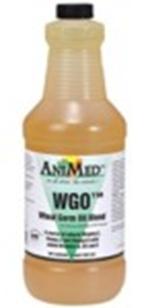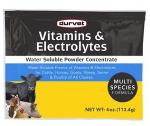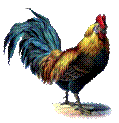














|
Vitamins, Minerals, and Supplements
For information about the effect vitamin deficiencies have on embryos and growing birds, go to Signs of Deficiencies In Poultry Embryos and
Nutrients Associated with Various Signs Of Deficiency in Growing Birds |
|
|
Cod Liver Oil in Soybean Oil. 1 quart Improves appetite, helps condition birds for breeding & showing. |
$13.00 |
|
Durvet Durastat with Oregano 100 gram jar Use 1 scoop per gallon of water as a source of energy & essential oils to stimulate water consumption & appetite during disease conditions, shipping, weather change, or stress. Enhances immunity. Cannot ship to New Mexico. |
$8.50 |
|
Durvet Durastat with Oregano Single Pak Each Packet makes 1 gallon of drinking water. Refresh daily. |
$1.00
|
|
Durvet Layer Boost 100 gram jar - 1 scoop per 1 gallon water provides a blend of vitamins, electrolytes, Omega 3 & marigold to improve the quality and quantity of eggs. Also contains a source of live direct fed microorganisms. |
$11.00 |
|
Durvet Layer Boost Single Pak Each Packet makes 1 gallon of drinking water. Refresh daily. |
$1.00 |
|
Durvet Probiotics Daily 100 gram jar - 1 scoop per to supports avian digestive health and nutriegallon of water provides avian specific probiotics nt absorption. Also contains vitamins and electrolytes. |
$11.00 |
|
Durvet Probiotics Daily Single Pak Each Packet makes 1 gallon of drinking water. Refresh daily. |
$1.00
|
|
Durvet Vitamins & Electrolytes 100 gram jar -1 scoop per gallon of water provides essential vitamins and electrolytes formulated by Durvet to be a nutrient supplement for all classes of poultry. Aids hydration and a nutrient for giving a fast start to newly hatched chicks well as older birds. |
$8.50 |
|
Durvet Vitamin and Electrolytes Single Pak Each Packet makes 1 gallon of drinking water. Refresh daily. |
$1.00
|
|
Durvet Vitamins & Electrolytes 4 ounce packet makes 110 gallons. Use when your birds need a boost. Can be used with chicks and adults. Vitamins: A, D3, E, riboflavin, pantothenic, niacin, B-12, folic acid, thiamine, pyridoxine. Minerals: Sodium, calcium, magnesium, ferric (iron) citrate, potassium chloride and dextrose. Can be used in automatic proportioners or as a feed additive. To make 1 gallon, mix 1/2 tsp. to 1 gallon water. Refresh daily. |
$5.50 |
|
GQF Vitamins Plus - Contains vitamins & minerals, organic acidifiers & a source of live natural-occuring micro-organisms to supplement gut acid product-ion often low in chicks. Gets chicks off to a good start. Use when birds are stressed or after using wormers & antibiotics with adult birds to restore “good-gut bacteria”. |
1 /$5.95
4/$22.00 |
|
GROGEL PLUS with DPP replaces GroGel Plus B. It provides immediate nutrition for just hatched chicks & poults. |
$3.00 2 / $5.00 |
|
Liquid B-12 plus Vitamin K (Rooster Booster) 1 pint Super concentrated 10,000 per ounce of pure Vitamin B-12 aids stimulation of appetite for proper growth & increased alertness. Dosage is printed on the bottle. |
$19.00 |
|
Happy Hen Mealworm Frenzy 10 ounce package 100% dried mealworms are a great source of protein & a high energy snack & are perfect for training or taming chickens 2 weeks & older. |
$11.00 |
|
Red Cell 1quart 1 gallon Liquid vitamin-iron mineral supplement to mix with feed or water to promote good feathering and to get poultry in top condition for breeding and showing. Promotes feathering. Use 1 tbsp. per gallon of feed or 1 tsp. per gallon of water. |
113.00 $32.00 |
|
STRESEEZ PLUS 10 gram package This is a nutritionally balance of essential vitamins, trace minerals for poultry drinking water. Use as a “nutritional booster” each month or during times of stress or whenever feed consumption is reduced. |
$3.00
2 / $5.00
|
|
Vionate 8 ounce jar Powdered feed additive contains 21 essential vitamins & minerals needed for maintaining healthy breeders and for improving the livability and growth of chicks. Is effective against preventing stress, leg problems, and crooked toes. |
$6.00
|
|
Wheat Germ Oil Blend 1 quart A source of Omega 3 & Omega 6 with vitamins A, D3, & E added. Helps condition birds for breeding & showing.
|
$13.00 |